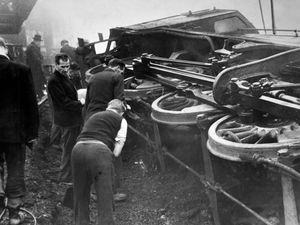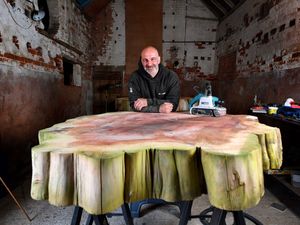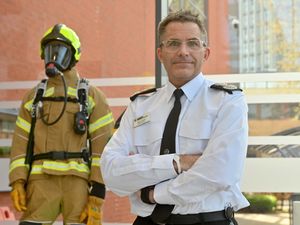Tales of the enemy who came to stay
Many prisoners of war were brought to the Midlands after the Second World War. Many of them never returned home.
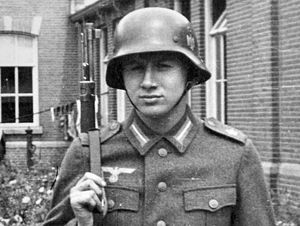
Martha’s mum took out her false teeth and tried to make herself look old and unattractive. Martha never found out if it worked.
“When the Russians came they attacked any woman they could find,” she recalled.
“One of the girls was found and raped, but only by one man. At other times the whole squad took turns, so we were lucky. We were all terrified.”
For her part, 12-year-old Martha was hidden in a hay loft for a long time to evade the searching soldiers.
It was war’s end and sympathy for the despised enemy, civilians or not, young or old, was in short supply.
Martha, an Austrian, born in Vienna and evacuated to a small village in the east, was just a drop in a human tidal wave of misery and hardship in the aftermath of the Second World War, comprising the defeated, the displaced, the desperate, and the stateless.
While countless books have been written about the conflict, there has been much less focus on what immediately followed.
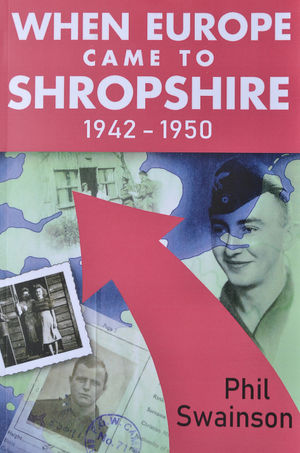
But now West Midlands historian Phil Fairclough has shone the spotlight on the individual experiences of some of those from across Europe caught up in the cataclysm who had something in common – they were to build new lives in rural Shropshire.
Written under the pseudonym Phil Swainson, his book ‘When Europe Came To Shropshire, 1942-1950’ is based on in-depth interviews he conducted between 2007 and 2009 of German and Italian prisoners of war, various civilians, and East Europeans who came to Britain post-war to work on the land as part of the European Voluntary Workers scheme to address a desperate labour shortage.

One, Fritz – Phil mostly uses false names although the stories are all true – was an ardent Nazi soldier captured in France and held in Britain as a prisoner of war until 1949. Unrepentant Nazis were the last to be given their freedom.
Fritz married an English woman, and after her death in 1988 married his second wife, who hailed from Shropshire, and they moved to the Telford area.
Phil said: “He was a nationalist through and through. When I knocked on the door he greeted me with ‘you might not want to interview me because I’m still a nationalist’.”
German prisoners of war were banned from marrying English women, but a romance in Shropshire involving Hermann Ganter, held captive at Donnington, and an ATS Sergeant, Monica Cann, made headlines. They secretly married in February 1947 in Wellington, but when the authorities found out they were taken to court, and the Army deliberately split them up.
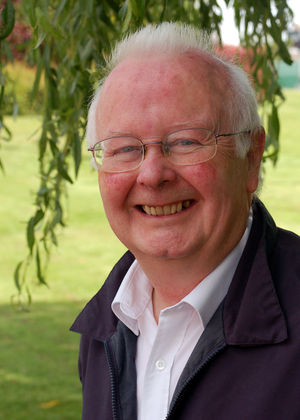
However public opinion was so outraged that the law was changed.
One English bride was Mary, from Wellington, who first met Wolfgang, a prisoner at the Cluddley camp, in 1946.
“When I was asked about why I had married a German, I always said ‘I did not marry a country, I married a man’,” she said.
“I have lived reconciliation for 60 years and recommend it to you all as a liberating experience.”
Ludwig had been in the Hitler Youth – those who served in it paint it as a fun organisation, with exciting boys’ activities like riding motorcycles – before joining the Waffen SS aged 17.
Wounded in a Russian bombardment, he was evacuated to Flensburg where he was captured by British troops, and by the autumn of 1945 was in a POW camp in Belgium under conditions so spartan that during one night 25 prisoners died of cold.
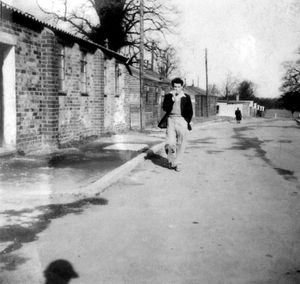
Later he was sent to Hermitage Camp, near Wrexham, where he had the standard interview to determine how fanatical a Nazi he was. The prisoners worked on Welsh farms, and even formed a football team which won a Welsh league. His last camp was at Condover, where he turned down a chance to return to Germany and elected to stay in England, settling in Welshampton.
Dieter, an anti-aircraft gunner, was taken prisoner by Yugoslav partisans at the end of the war, but escaped and surrendered to New Zealanders instead, who were less likely to shoot him.
When questioned about his attitudes, he seemed to give the wrong answers, as he was sent to a bomb disposal group near Liverpool.
“Our English officers thought we were volunteers, but this was not true.”
When the time for his release got closer, he went on a re-education course, which influenced him greatly, although he was unconvinced by attempts to persuade him that modern art was superior to Nazi representational art.
“While it did not turn me from a Nazi to a democrat overnight, I honestly think it started a process which allowed me to move forward,” he said.
While still a POW in Huyton in 1947 he met Joan, and they married and moved to Shropshire, although Dieter kept his German citizenship.
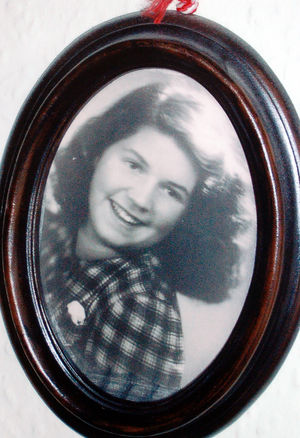
Margareta was born in the German-speaking part of Czechoslovakia, the Sudetenland, which in an act which was a key stepping stone towards war was seized by Hitler in 1938 amid celebrations among the ethnic Germans. She actually met Hitler in October 1938, when she was eight, and in the youth organisation the Bund Deutscher Madschen.
As the fighting came closer, 14-year-old Margareta was taught how to use a Panzerfaust, an anti-tank weapon. Relieved that the Americans arrived before the much-feared Russians, her family were nevertheless thrown out on the street when their house was taken over. She said leading Nazis were taken to the edge of a quarry by the Americans and shot. The Sudetenland was returned to Czechoslovakia, run by Communists.
She said: “Now it was our turn. We were all to be deported and given just 24 hours to get ready. This was October 1945. The Sudetenland would only be for the Czechs.”
Homeless and stateless for years, in December 1949 she arrived in Britain, and was housed and worked at Bobbington Camp at Halfpenny Green. She met a young Englishman whom she married in 1951, and they lived in Wolverhampton, while she worked at Courtaulds. After 12 house moves, they settled in Shropshire.
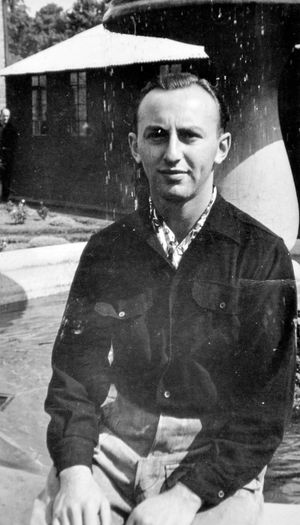
“I think I am very lucky,” Margareta reflected. “Adolf Hitler had taken over the Sudetenland, but he did not give us full German citizenship. The Czechs threw us out. It was the English who welcomed me in, a poor stateless refugee from Europe, and gave me full English citizenship. I am very grateful for what this country did for me.”
Captured in North Africa in 1943, Rudolph was held at Sheriffhales prisoner of war camp from August 1946 to August 1948. Most prisoners did farm work, but Rudolph worked on a Lilleshall Company scrapyard near Granville Colliery. He too elected to stay in England on his release, and married an English girl and settled in Shropshire.
One EVW worker was Nikola, a Serbian from Dalmatia caught up in the complex politics and religious divides of Yugoslavia. He was in the Chetniks, the royalist army which fought the Germans and Italians, but whose relations with Tito’s anti-monarchy Communists were poor.
“The British and Americans betrayed us and recognised only Tito and the Communists as the legitimate rulers of our country.”
On war’s end they became stateless refugees, hearing that if they returned to Tito’s Yugoslavia they would face trial and possible imprisonment.
Nikola says most ended up in England, although this was not their first choice.
“On November 24, 1952, I arrived at ‘O’ Camp, which is now Barclay Lodge at Donnington.

“One of the huts was converted into a chapel for the Serbian Orthodox Church, the first church of its kind in the UK. We created our own community here. We had our church, our own social club and library. We all lived together in the huts of ‘O’ Camp.
“We dreamed about returning home to Yugoslavia. These feelings lasted until about 1960, but it became clear even to the most committed nationalist that we had to stay in England.
“There are still 40 Serb families living in Donnington, but as more marry out into the wider English community our numbers have dwindled.”
Nikola was just one of the hundreds of thousands who came to Britain in a continuous stream from 1942 to 1950, first with the arrival of German and Italian prisoners of war, and later with refugees and European Voluntary Workers from all over Europe, including Poles, Lithuanians, Czechs, Slovaks, and Yugoslavs.
It is an era which has long fascinated Phil.
“I didn’t really want to write a book, to tell you the truth,” he said. “I interviewed all these refugees and prisoners of war and used go round groups giving talks about them. My wife said ‘Write it up and get it published.’ In the end I gave up and did.”
Although the interviews were conducted over 10 years ago, Phil deliberately delayed going into print, saying: “They were all very elderly and I’m very conscious a lot of them did not want any publicity. I waited until suitable years had passed until, to put it politely, all those who said they did not want publicity had long gone.”
Phil, who will turn 80 in January, said: “I have always been interested in the 1930s, and 1940s, and particularly in what happened after the war. The whole thing was dreadful and created so much unhappiness, not only for our people, but people in Europe who were allies and enemies, particularly those who frankly did not deserve it, including young women and children.

“It’s a tale of suffering and how people came through it and made decent lives for themselves. It was really a kind of commentary on what happened and how awful it actually was and how people managed to pull themselves round and get together.”
Phil says there were at least 18 prisoner of war camps in Shropshire, of which 16 have been verified. There were major base camps for 2,000 men at Adderley Hall, Mile House near Oswestry, and Sheriffhales.
Smaller work camps were Acksea at Kinnerley; Cluddley near Wellington; Condover airfield; Davenport House, Worfield; three camps at Donnington; Green Fields on Ellesmere Road, Shrewsbury; Hawkstone Park; Merrington Green; Prees Heath alien internment camp; Sheets Farm at Ludlow; St Martins, now the site of Bank Top industrial estate; Wem; and Wilcott.
Phil Swainson's book 'When Europe Came To Shropshire, 1942-1950’ is available for £5 plus postage from Chadgreen Books on 01952 595690.


